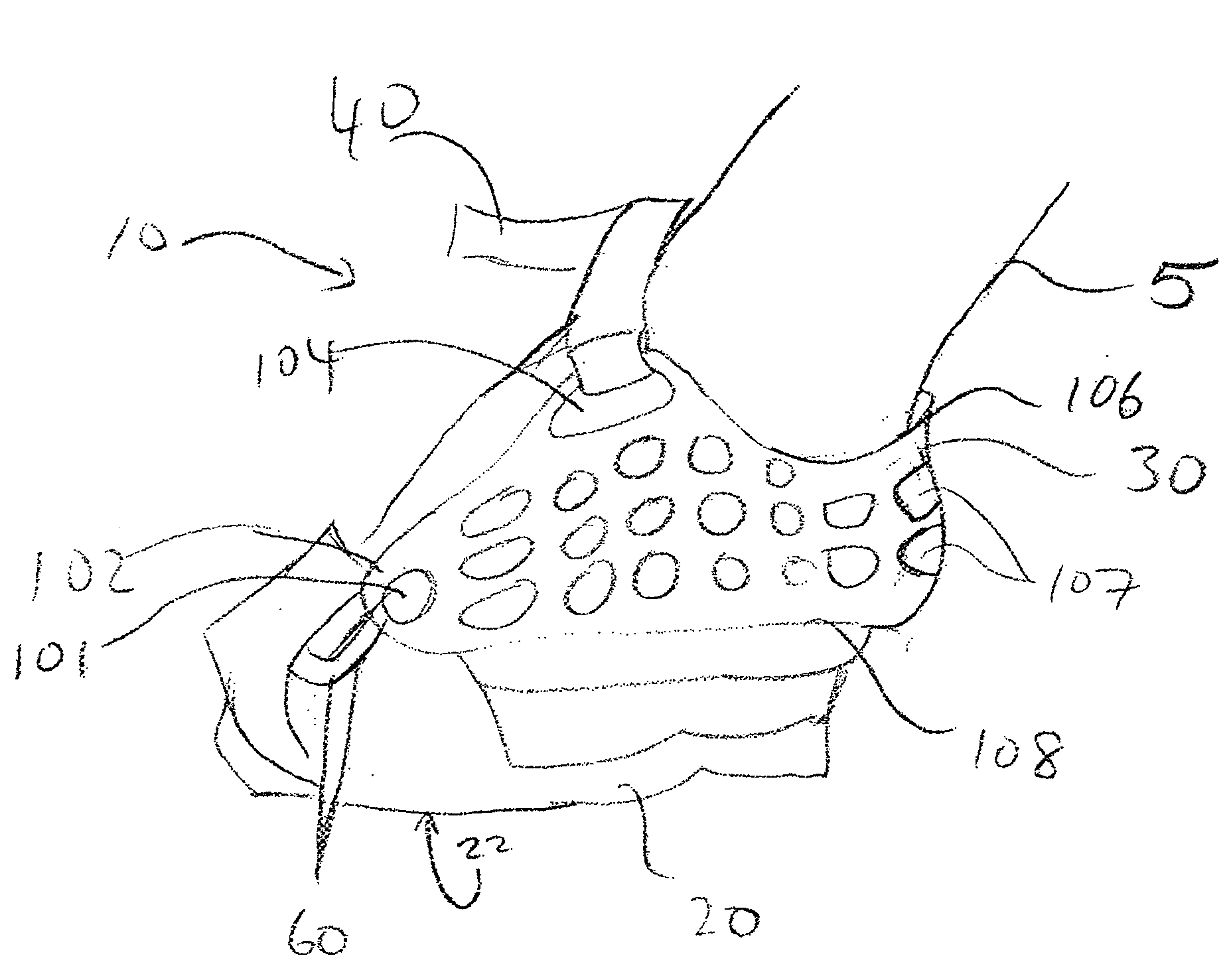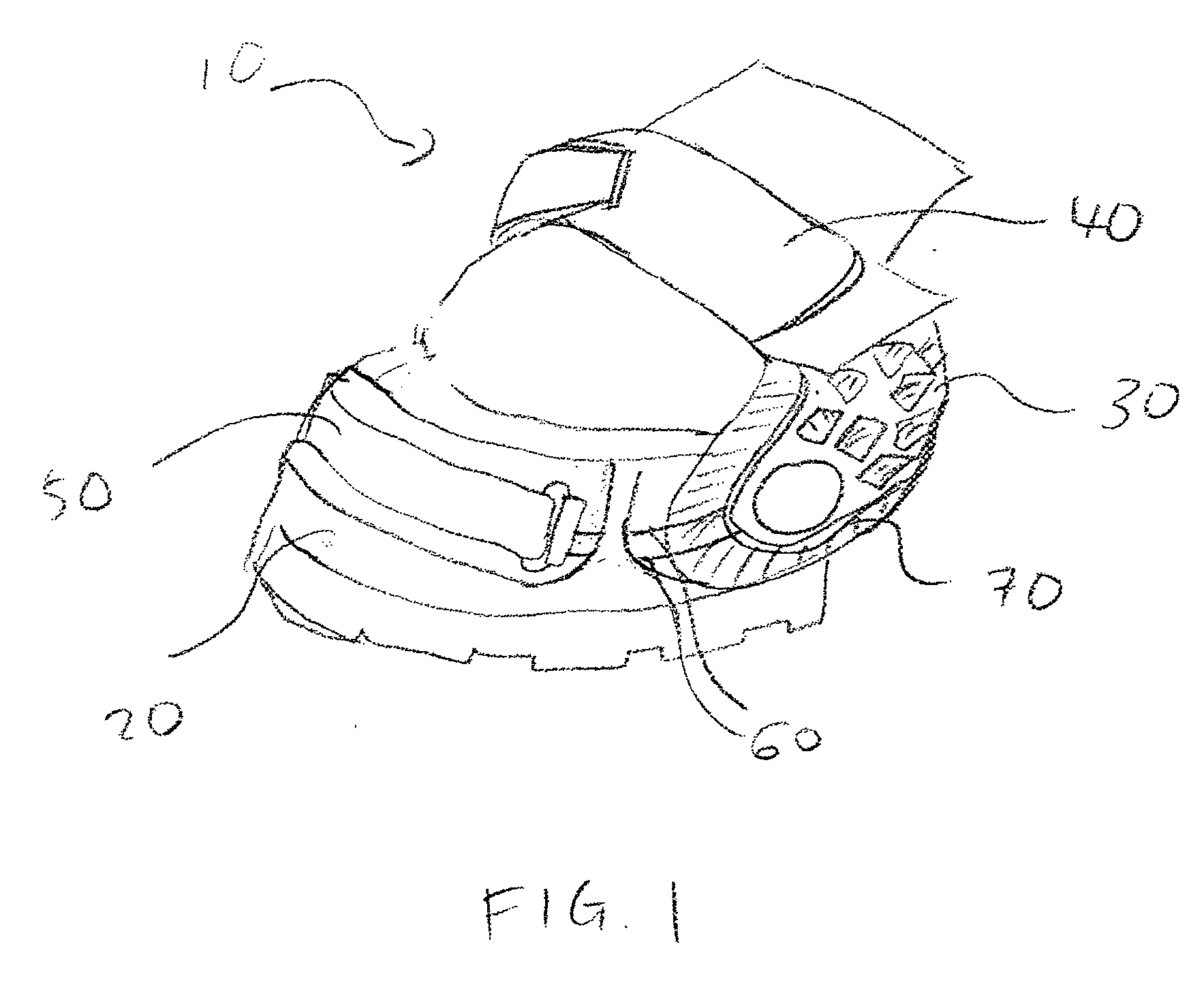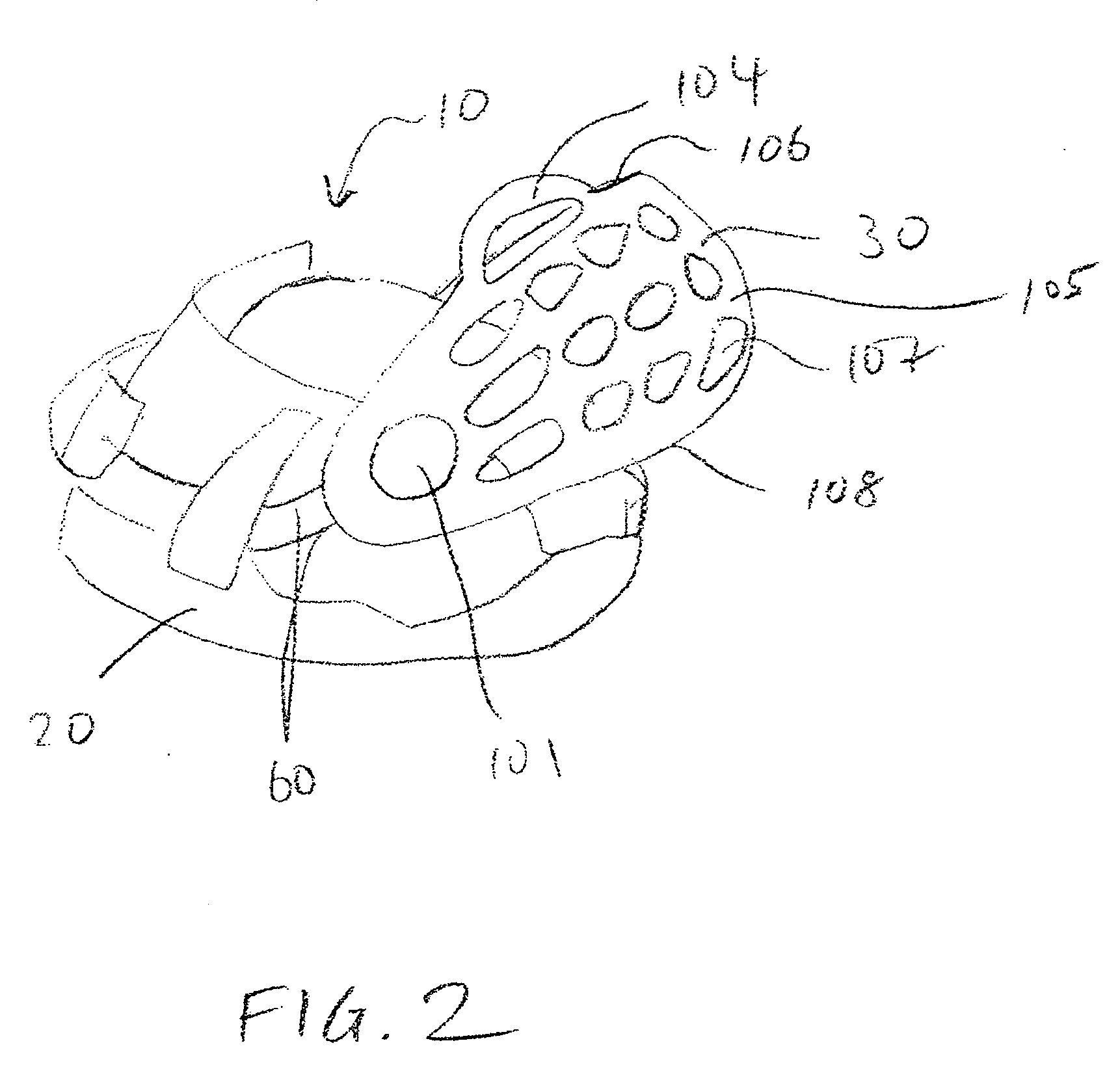Hoof boot with pivoting heel captivator
a technology of pivoting heel captivator and hoof boot, which is applied in the field of horseshoes with pivoting heel captivators, can solve the problems of reducing the ability of the hoof to absorb, restricting the natural expansion and conformance of the hoof during movement, and poor solution of the horsesho
- Summary
- Abstract
- Description
- Claims
- Application Information
AI Technical Summary
Benefits of technology
Problems solved by technology
Method used
Image
Examples
Embodiment Construction
[0037] In FIG. 1, a hoof boot 10 generally comprises a base 20, a heel captivator 30, a keeper strap 40, a hook strap 50 with cables 60, and a liner 70.
[0038] As shown in FIGS. 2 and 3, a heel captivator 30 can comprise a single, contoured piece with an arch top 106, a strap holder portion 104 extending from a heel bulb 105 on each side of the heel captivator 30, an attachment position 101 on each side also extending from the heel bulb 105, and an edge 108. The strap holder portions 104 and the attachment positions 101 extending from a heel bulb 105 on each side of the heel captivator 30.
[0039] The arch top 106 extends from one of the strap holder portions 104 to the other as seen in FIGS. 2 and 3. Preferably, the arch top 106 has a U-shape or other conformation that provides adequate clearance for the pastern bone region of the hoof as shown in FIG. 4. As discussed above, the pastern bones descend very low upon the weight bearing phase of a horse and can approach ground parallel ...
PUM
 Login to View More
Login to View More Abstract
Description
Claims
Application Information
 Login to View More
Login to View More - R&D
- Intellectual Property
- Life Sciences
- Materials
- Tech Scout
- Unparalleled Data Quality
- Higher Quality Content
- 60% Fewer Hallucinations
Browse by: Latest US Patents, China's latest patents, Technical Efficacy Thesaurus, Application Domain, Technology Topic, Popular Technical Reports.
© 2025 PatSnap. All rights reserved.Legal|Privacy policy|Modern Slavery Act Transparency Statement|Sitemap|About US| Contact US: help@patsnap.com



